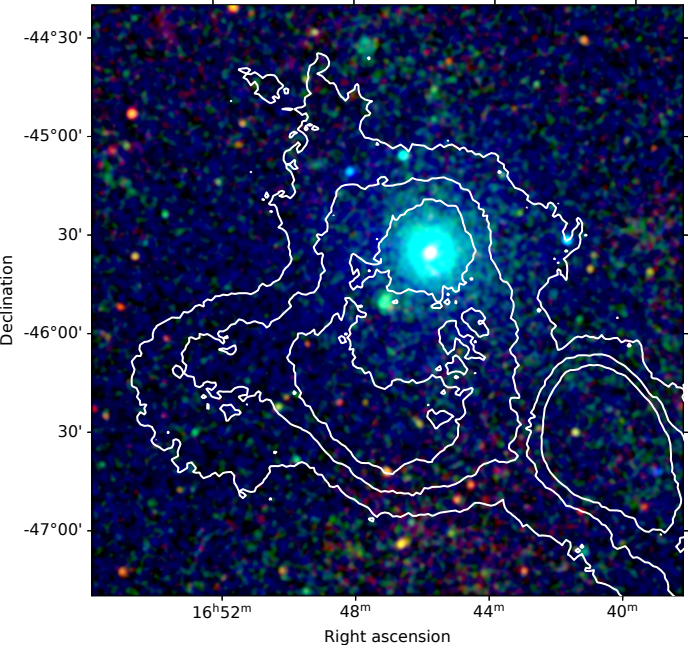Astronomers from the Remeis Observatory have studied the X-ray emission from a massive young star cluster that acts as a Galactic particle accelerator
Our home galaxy, and consequently Earth too, is submerged in a continuous stream of charged particles known as cosmic rays. These particles can reach very high energies, well above a petaelectronvolt (1 PeV, i.e., 1015 electronvolts), which is about 140 times larger than the maximum energy of protons accelerated in the Large Hadron Collider. However, precisely these large energies of cosmic rays are puzzling to astronomers: While Galactic sources that accelerate particles above PeV energies have been detected through their secondary emission of gamma rays, both the physical nature of these so-called “PeVatrons” and their relation with the cosmic rays observed on Earth remains unclear. In particular, while cosmic rays consists mostly of protons and heavier nuclei and only to a small part of electrons, the gamma ray emission from the PeVatrons can typically be explained equally well through the acceleration of protons or electrons. This degeneracy makes it hard to tell if the observed PeVatron population can accelerate the necessary amounts of different types of particles to explain the cosmic ray spectrum on Earth.
To address this issue, astronomers from the Remeis Observatory performed the first analysis of a PeVatron candidate with the SRG/eROSITA X-ray telescope. The study was led by then-Master’s student Konstantin Haubner, now pursuing his PhD in Florence, and was supervised by Prof. Manami Sasaki, leader of the Remeis Multiwavelength Group. Together with their coauthors, they investigated the massive young star cluster Westerlund 1, which is associated with the extended gamma-ray source HESS J1646-458 – a PeVatron candidate. Specifically, they looked for signs of X-ray synchrotron radiation, that is, radiation which is produced by charged particles in magnetic fields. As proton radiate almost no synchrotron radiation, a detection of synchrotron radiation would indicate that Westerlund 1 accelerates electrons and therefore constrain the emission scenario. While Westerlund 1 had previously been studied with X-ray telescopes, the region of interest of the PeVatron candidate was too large for their limited fields of view. The new study was possible thanks to the SRG/eROSITA telescope, which was co-developed by the Remeis Observatory and launched in 2019 to perform X-ray all-sky surveys, during which it covered the entire region of interest.

X-ray image of the surroundings of Westerlund 1 with gamma-ray contours from the H.E.S.S. telescope in white. Red, green, and blue colors show soft, intermediate, and hard X-ray emission, respectively. The star cluster Westerlund 1 is the diffuse “green” source at the center, while the larger “blue” source to the northwest is an X-ray binary that contaminates the region of interest. The image demonstrates the enormous extent of the gamma-ray source HESS J1646-458, compared to the star cluster itself.
X-ray emission from Westerlund 1 itself was clearly detected in the eROSITA data and can be explained by the stellar winds of massive stars in the cluster or by emission from unresolved young stars. However, no additional X-ray synchrotron radiation from the PeVatron candidate HESS J1646-458 could be found. By measuring an upper limit to the observed synchrotron emission, the Remeis researchers established an upper bound on the magnetic field strength around Westerlund 1 of 7 μG, somewhat larger than the typical Galactic value of 1 μG. Hence, even though the question of the true emission scenario of Westerlund 1 remains open, this result is an important first step towards understanding this source’s nature.
Read more: eROSITA X-ray analysis of the PeVatron candidate Westerlund 1
Haubner, K., Sasaki, M., et al., 2025, A&A, 695, A3
Konstantin Haubner
konstantin.haubner@fau.de
+49 951 95222 23
Manami Sasaki
Manami.Sasaki@fau.de
+49 9131 85-81019





